5 Tips To Prepare an Online Employee Onboarding Process (with Examples)
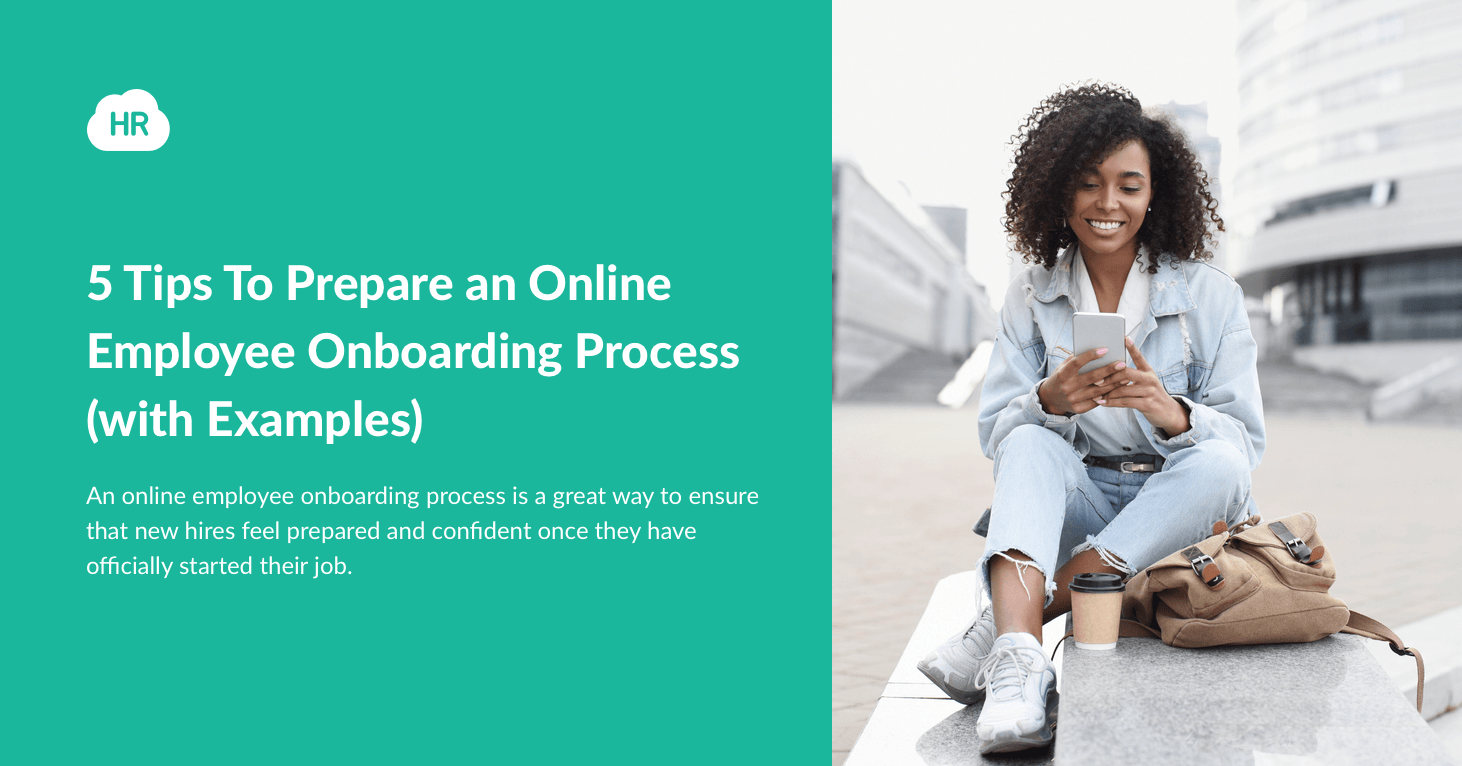
Let Us Help You Engage Your Employees!
Onboard New Hires Safely, Efficiently, and Effectively.
Are You Interested in Improving Your HR Organization?
An online employee onboarding process is a great way to ensure that new hires feel prepared and confident once they have officially started their job.
Having a clearly laid out process gives each individual the opportunity to familiarize themselves with the company’s mission, values, and procedures in their own time, making them more comfortable when it comes to performing their role.
It also enables HR personnel to quickly ramp up new employees by presenting essential information that every employee will need to know on day one. An online employee onboarding process helps make sure that every staff member has a consistent and high-quality introduction to the company.
Tip 1: Define your Onboarding Goals and Objectives
Defining your onboarding goals and objectives is a crucial first step in preparing an online employee onboarding process. This will help ensure that your onboarding efforts are focused and effective.
Some potential goals might include introducing new hires to the company culture and values, helping them understand their role and responsibilities, and equipping them with the knowledge and skills they need to be successful in their new position.
To help achieve these goals, you might consider setting specific objectives, such as completing certain training modules or reaching specific performance milestones. Clearly outlining your goals and objectives will also help you measure the success of your onboarding efforts and make any necessary adjustments. Below are some examples of onboarding goals and objectives.
Example Goal 1: Introduce new hires to the company culture and values
Objectives:
-
Complete the company culture training module
-
Attend a virtual welcome event with senior leadership
-
Meet one-on-one with a mentor to discuss company values and culture
Example Goal 2: Help new hires understand their role and responsibilities
Objectives:
-
Review job description and expectations
-
Attend department-specific training sessions
-
Meet with supervisor to discuss project priorities and goals
-
Set goals and expectations for the first task
Example Goal 3: Equip new hires with the knowledge and skills they need to be successful in their new position
Objectives:
-
Complete relevant training modules
-
Attend skills development workshops
-
Participate in job shadowing or mentorship opportunities
These are just a few examples, and the specific goals and objectives will depend on the needs of your organization and the role that the new hire is filling. The important thing is to have a clear understanding of what you want to achieve through your onboarding process and to set specific, measurable objectives that will help you get there.
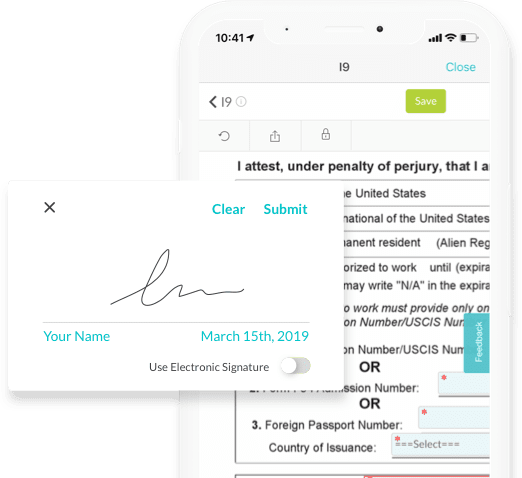
Tip 2: Create a Comprehensive Onboarding Plan
Creating a comprehensive onboarding plan is a crucial step in preparing an effective online employee onboarding process. This plan should outline all of the activities and resources that will be provided to a new hire freelancer or full-time employee during their first few weeks and months on the job.
To create a comprehensive onboarding plan, start by outlining the key steps that need to be completed and the resources that will be needed to support each step. Consider including activities such as orientation sessions, training sessions, team-building exercises, and one-on-one meetings with supervisors or mentors.
Below is an example of a 30 60 90-day onboarding plan.
Week 1
-
Welcome event with senior leadership
-
Tour of virtual office
-
Introduction to company culture and values
-
Review of job description and expectations
Week 2-4
-
Department-specific training sessions
-
Meetings with team members and other key stakeholders
-
Review of company policies and procedures
Week 5-8
-
Skills development workshops
-
One-on-one meeting with a supervisor to discuss project priorities and goals
-
Introduction to company systems and tools
Week 9-12
-
Job shadowing or mentorship opportunities
-
Team-building exercises
-
Review of performance expectations and feedback processes
Week 13-24
-
Ongoing training and development opportunities
-
Regular check-ins with the supervisor
-
Opportunities to network with colleagues and build relationships
Week 25-90
-
Continued training and development opportunities
-
Regular evaluations and feedback sessions
-
Opportunities to take on additional responsibilities and grow within the company
These are just examples, and the specific onboarding plan will depend on the needs of your organization and the role that the new hire is filling. The important thing is to have a clear plan in place that outlines the activities and resources that will be provided to new hires during their first few weeks and months on the job.
“As soon as we saw HR Cloud’s Onboard demo, we knew this was the perfect solution for us. We loved that it was extremely simple and powerful out of the box, but that we could customize it with advanced capabilities to make it work in our company setting.”

Tip 3: Use Technology to Your Advantage
Using technology in the onboarding process can help make the process more efficient, effective, and engaging for new hires. Below are a few ways you can use technology to support an online employee onboarding process.
Host Engaging Onboarding Webinars
Host interactive webinar sessions, orientation sessions, training sessions, and one-on-one meetings with supervisors or mentors. This allows new hires to see and hear from the people they will be working with, even if they are not physically present in the same location. Using professional webinar software platforms will allow you to use interactive features to make it more engaging and memorable
Provide Online training modules
Many companies use online training platforms to provide new hires with the knowledge and skills they need to be successful in their roles. These modules can be accessed at any time, making it easy for new hires to complete them at their own pace.
Use Collaborative Tools
Tools like Google Docs, Slack, and Trello, or some premium tools such as Clickup or Mavenlink, can be used to facilitate collaboration and communication during the onboarding process. These tools allow new hires to share documents, ask questions, and stay up-to-date on team projects and initiatives.
By using technology in the onboarding process, you can help ensure that new hires have the support and resources they need to be successful in their new roles.
Social Intranet Software that Encourages Employee Communication
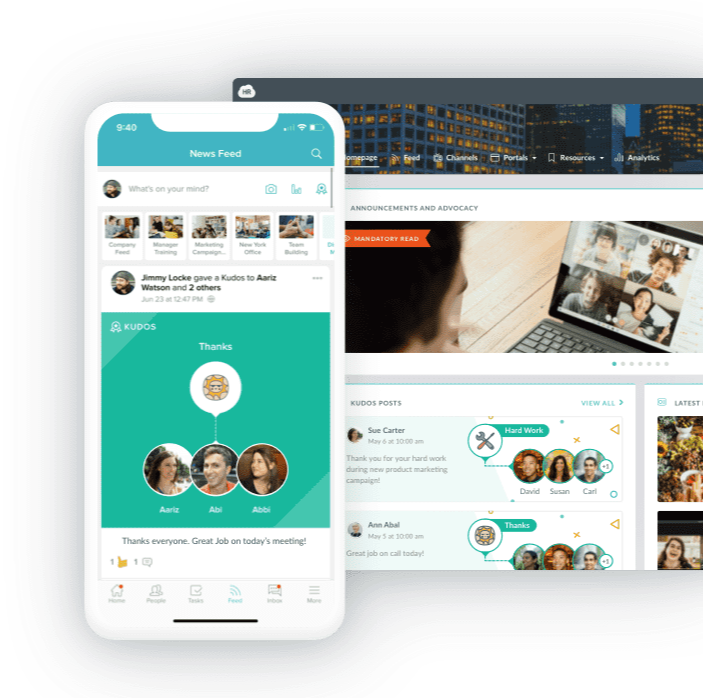
Tip 4: Provide Training and Resources for Success
New hires need to be equipped with the knowledge and skills they need to be successful in their roles, and it's important to provide them with the resources they need to learn and grow. Some ways you can provide training and resources during the onboarding process are listed below.
Department-specific training sessions: These sessions can provide new hires with the skills and knowledge they need to excel in their specific roles and responsibilities. For example, a customer service employee might need to understand the company's policies and procedures around customer interactions and disputes, while a software engineer may need to understand the technical aspects of their
Skills development workshops: Consider offering workshops or training sessions that focus on broader skills that will be valuable to new hires in any role, such as communication, problem-solving, or time management.
Online training modules: Many companies use online training platforms to provide new hires with the knowledge and skills they need to be successful in their roles. These modules can be accessed at any time, making it easy for new hires to complete them at their own pace.
Job shadowing or mentorship opportunities: Pairing new hires with experienced employees can provide them with valuable hands-on experience and insights into the day-to-day workings of their roles.
By providing training and resources for success, you can help ensure that new hires have the support they need to thrive in their new roles.
Buddy program: An employee buddy program pairs new employees with experienced employees to provide personalized support and guidance as they navigate their new job and the company culture. A buddy program can improve your onboarding process, increase productivity, enhance knowledge sharing, create a greater sense of belonging, and improve new hire retention.
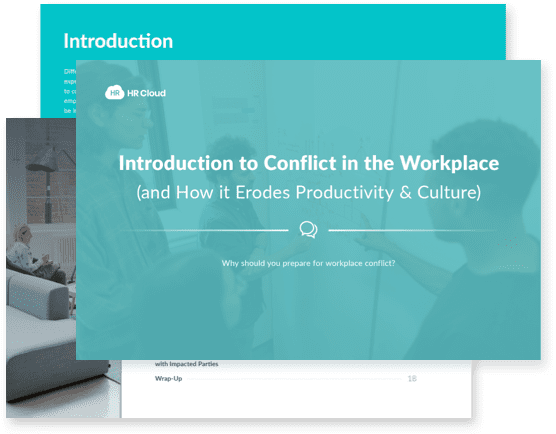
Introduction to Conflict in the Workplace
(and How it Erodes Productivity & Culture)
Tip 5: Make Onboarding an Ongoing Process
Onboarding should not be a one-time event, but rather an ongoing process that helps new hires continue to learn and grow in their roles. Below are a few ways you can make onboarding an ongoing process.
Regular check-ins: Schedule regular check-ins with new hires to discuss their progress and provide support and guidance as needed. These check-ins can be one-on-one meetings with a supervisor or mentor, or they can be more formal evaluations.
Continued training and development opportunities: Provide new hires with ongoing training and development opportunities to help them continue to learn and grow in their roles. This might include workshops, webinars, or online courses.
Mentorship and coaching: Pair new hires with experienced employees who can act as mentors and provide ongoing support and guidance as they navigate their roles and responsibilities. Mentorship is an excellent way to further boost employee engagement.
Opportunities to take on additional responsibilities: As new hires become more comfortable in their roles, consider providing them with opportunities to take on additional responsibilities and challenges. This can help them continue to grow and develop within the company.
By making onboarding an ongoing process, you can help ensure that new hires have the support and resources they need to thrive in their roles and continue to grow and develop within the company.
Key Takeaways about Tips to Prepare an Online Onboarding Process
To summarize, the foundation of a successful online onboarding process is setting clear goals and measurable objectives. This will help to align the expectations between the employee and manager.
A more practical way to create an onboarding process is to add time-bound objectives for the first 90 days, divided by weeks. If each 3-week period has clear objectives, it helps the employee to focus on the right activities.
Attending interactive online webinar sessions with peers and managers help recruits get to know each other, ask questions, and have important discussions. This will create engaging and more memorable experiences throughout the onboarding. In fact, all the online tools that new employees use should be clearly aligned and communicated.
And finally, help the employee to have clear personal development plans and career goals. Having an ongoing development journey will make the employee more fulfilled and loyal.
The 40 Best Thank You
Messages for Colleagues
building a positive and engaged culture at your company.
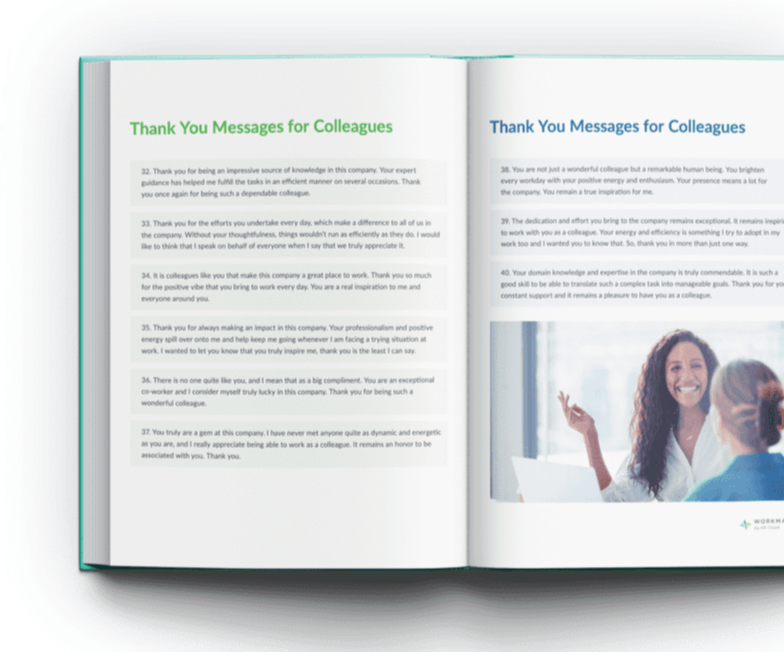
Author Bio
Erkki is the founder of influno.com, which helps entrepreneurs, marketers and sales managers make the best decisions on the business tools to drive their businesses forward. During his career Erkki has hired and onboarded several new employees.
Keep Reading
Workforce Management through Tech-Based Tools: Streamlining Construction and Roofing Operations
As industries evolve, adopting innovative approaches to workforce management is essential
Skills vs Abilities in the Workplace
Modern-day workplaces are facing many challenges that were not foreseeable a few years






